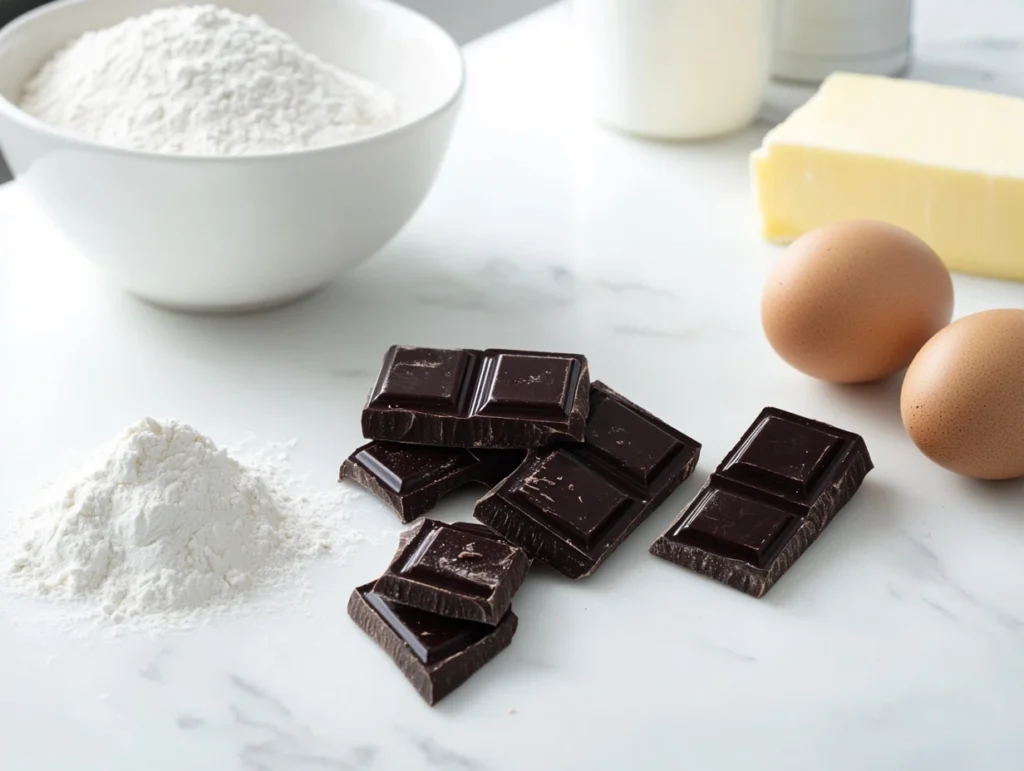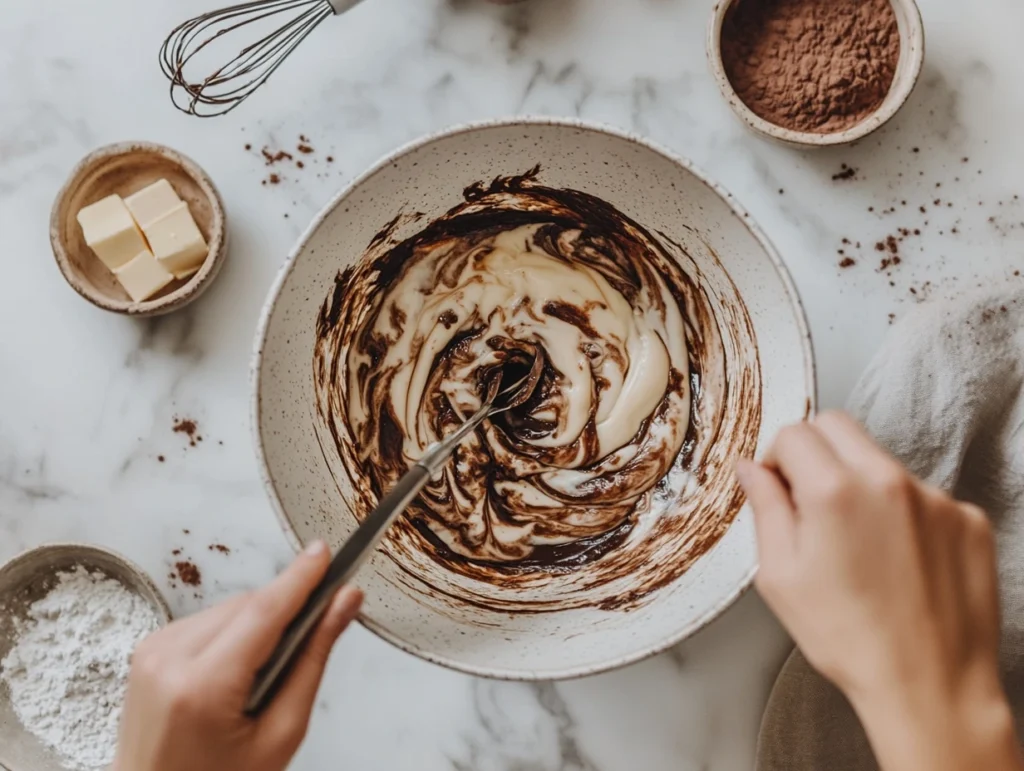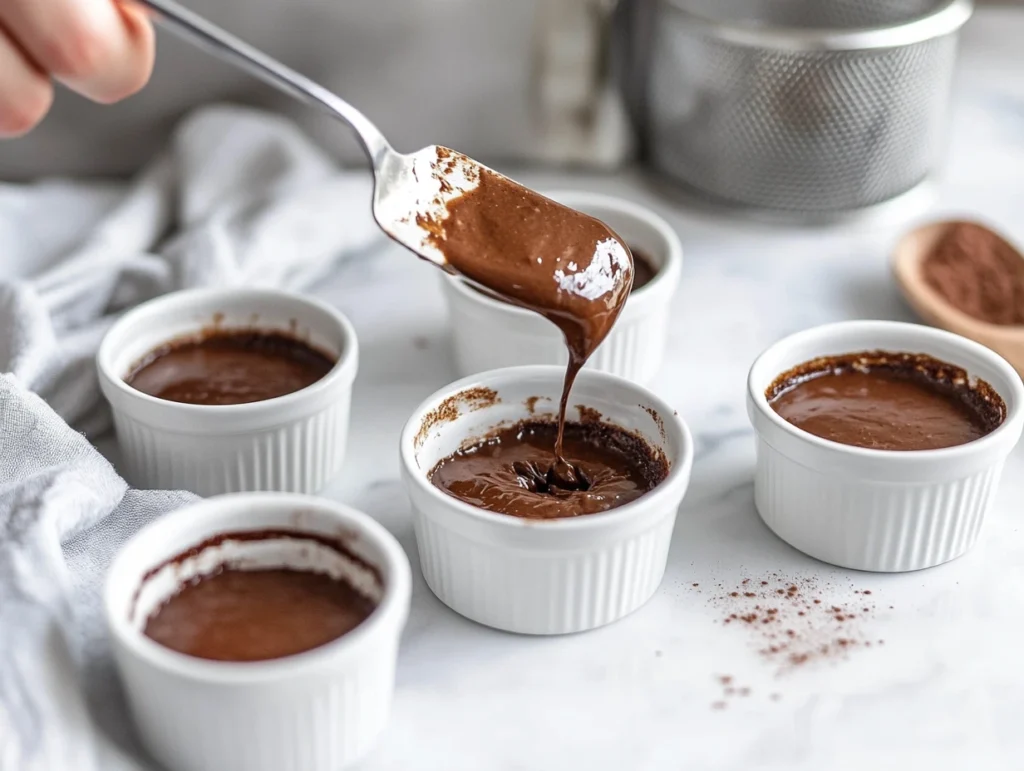Chocolate lovers, rejoice! This article takes you on a delicious journey to unravel the subtle yet intriguing differences between two iconic desserts: molten lava cake and lava cake. While these terms are often used interchangeably, they each carry unique traits that set them apart. We’ll dive into their characteristics, similarities, differences, and even tips on making them. If you’ve ever wondered about the fine line that separates these delectable treats, you’re in for a treat!
Introduction to Chocolate Indulgence
The Allure of Chocolate-Based Desserts
There’s something irresistible about chocolate desserts—they’re warm, gooey, and always indulgent. Among these, molten lava cake and lava cake hold a special place in the hearts of dessert lovers worldwide. But what makes these two desserts stand out? Their rich flavors, flowing centers, and luxurious textures make them the ultimate choice for any chocolate aficionado.
Why Differentiating Molten Lava Cake and Lava Cake Matters
Though they might appear similar at first glance, understanding the nuances between molten lava cake and lava cake can elevate your dessert-making and dining experience. Are you drawn to the dramatic flow of chocolate or the fudgier, denser center? Knowing the difference helps you pick the right dessert to suit your craving and occasion. Plus, it’s a fascinating way to appreciate the art of dessert creation.
Stay tuned as we delve deeper into what sets these two chocolatey marvels apart. Up next, we’ll define molten lava cake in detail and explore what makes it such a decadent delight!
Defining Molten Lava Cake
What is Molten Lava Cake?
Molten lava cake, often called chocolate fondant or simply molten cake, is a single-serving dessert that’s a dream come true for chocolate lovers. With its warm, gooey center and tender cake exterior, this dessert delivers a rich and indulgent experience in every bite. When you cut into it, the molten chocolate flows out like lava—hence its name.
This dessert is not just about taste; it’s about texture and presentation too. Its gooey center contrasts beautifully with the soft, baked cake surrounding it. But here’s the kicker: many people confuse molten lava cake with lava cake, sparking the question, “What is the difference between molten lava cake and lava cake?”
Key Characteristics of Molten Lava Cake
Molten lava cake is characterized by its thicker cake layer, which holds the warm, gooey chocolate inside. The center is fudgy, dense, and intensely chocolatey, offering a richer mouthfeel than other desserts. It’s typically made with a simple batter of eggs, sugar, butter, and high-quality chocolate, giving it its decadent flavor.
The dessert is usually served warm and pairs perfectly with a scoop of vanilla ice cream or a dusting of powdered sugar. For those who appreciate texture and flavor over visual drama, molten lava cake often wins the day.
Historical Background: Origins of Molten Lava Cake
The origins of molten lava cake are widely attributed to Chef Jean-Georges Vongerichten, who claims to have discovered the dessert by accident in the 1980s. As the story goes, he removed a chocolate sponge cake from the oven too early, leaving the center molten and gooey. The result? A dessert sensation that quickly became a favorite on menus worldwide.
Molten lava cake’s combination of simplicity and elegance has made it a go-to choice for home bakers and professional chefs alike. Its fame continues to grow as more people discover the magic of its oozing chocolate core.

Understanding Lava Cake
What is Lava Cake?
Lava cake, often used interchangeably with molten lava cake, is a chocolate dessert that emphasizes visual appeal as much as taste. True to its name, lava cake showcases a dramatic flow of chocolate when sliced, resembling a molten volcanic eruption. However, it has a thinner, more delicate cake layer compared to molten lava cake, allowing the liquid center to steal the show.
While they’re similar, many people ask, “What is the difference between molten lava cake and lava cake?” The answer lies in the texture, density, and presentation of each dessert, which we’ll explore further in this article.
Unique Traits of Lava Cake
What sets lava cake apart is its thinner, crispier exterior and lighter, more fluid chocolate center. It’s all about the “wow” factor when the chocolate flows freely onto the plate, creating a visually stunning effect. This thinner crust allows for a stronger emphasis on the molten core.
Unlike molten lava cake, lava cake is often baked at slightly higher temperatures for a shorter time, ensuring the center remains liquid while the edges set just enough to hold their shape. The result is a dessert that feels lighter on the palate but equally indulgent.
Evolution of Lava Cake in Dessert Culture
The evolution of lava cake reflects a growing appreciation for dramatic dessert presentations. Over the years, variations like white chocolate lava cake and salted caramel lava cake have become popular, offering new ways to enjoy this classic treat.
Restaurants often feature lava cake as a show-stopping dessert because of its theatrical quality. Whether served with fresh berries or a drizzle of caramel, lava cake delivers an unforgettable experience. It’s no wonder that chocolate enthusiasts continually ask, “What is the difference between molten lava cake and lava cake?” to better appreciate the artistry behind each.
Similarities Between Molten Lava Cake and Lava Cake
Shared Chocolatey Goodness
Both molten lava cake and lava cake are adored for their rich, chocolatey flavor that appeals to dessert enthusiasts everywhere. Their main ingredient, high-quality chocolate, takes center stage in both desserts, delivering an indulgent experience that few can resist. Whether you’re a fan of bold cocoa notes or creamy sweetness, these desserts offer something for everyone.
Gooey Centers as a Common Ground
The hallmark of both desserts lies in their gooey, molten centers. When sliced, the warm chocolate flows out, creating a sensory delight. This signature characteristic often leads to confusion, sparking questions like, “What is the difference between molten lava cake and lava cake?” While their centers may look similar, the texture and density set them apart—a topic we’ll explore in the next section.
Warm, Comforting Appeal
Another similarity is the way these desserts are best enjoyed—warm and freshly baked. Served alongside a scoop of vanilla ice cream or topped with fresh berries, they’re perfect for cozy evenings or celebrations. Their comforting warmth enhances the chocolate flavor, making every bite unforgettable.

For more decadent dessert inspiration, check out this recipe for heavenly hash brownies, another chocolatey delight worth exploring.
Key Differences Between Molten Lava Cake and Lava Cake
Variation in Cake Exterior: Thick vs Thin
The cake layer is a major point of distinction. Molten lava cake boasts a thicker, moist exterior that gives it a more traditional cake-like feel. In contrast, lava cake features a thinner, crispier crust, offering a lighter texture that complements its molten core. These differences make the question, “What is the difference between molten lava cake and lava cake?” an essential one for dessert aficionados.
Contrast in Chocolate Center Texture: Fudgy vs Liquid
While both desserts have molten centers, the texture varies significantly. The center of a molten lava cake is denser and fudgier, offering a more robust mouthfeel. Lava cake, on the other hand, prioritizes a lighter, more liquid consistency, emphasizing the flowing “lava” effect.
Visual Appeal: Subtle Elegance vs Dramatic Presentation
Molten lava cake leans toward understated elegance with its focus on balanced texture and flavor. Lava cake, however, steals the show with its dramatic chocolate flow. For those seeking a dessert that wows visually, lava cake often takes the cake (pun intended).
Serving Contexts: When to Choose Which?
Choosing between the two often depends on the occasion and personal preference. If you’re hosting a formal dinner, the refined presentation of molten lava cake might be the better fit. For casual gatherings or a fun dessert, the theatrical nature of lava cake can make a lasting impression.
Both desserts have their place in the world of chocolate indulgence. If you’re still torn, why not try making both and see which one wins your heart? You can even experiment with a variety of flavors for each to find your favorite version.
How to Choose the Right Dessert for Your Occasion
Preference for Texture and Flavor
When deciding between molten lava cake and lava cake, texture and flavor play a huge role. If you love a denser, fudgier center with a more substantial bite, then molten lava cake is your go-to. On the other hand, if you’re drawn to lighter textures and the dramatic visual appeal of flowing chocolate, lava cake will not disappoint.
The choice often comes down to personal preference. Some people prefer the balanced, cake-like feel of molten lava cake, while others prioritize the sheer fun of cutting into a lava cake and watching the chocolate ooze out.
Occasions That Call for Lava Cake’s Drama
Lava cake is the ultimate show-stopper. Its thin crust and flowing chocolate center make it ideal for casual parties or romantic dinners where presentation matters. If you’re hosting an event and want to wow your guests, this dessert is bound to impress.
Scenarios Favoring Molten Lava Cake’s Depth
Molten lava cake, with its thicker exterior and fudgy core, is perfect for formal occasions or moments when flavor takes center stage. It pairs beautifully with gourmet garnishes like caramel sauce or fresh fruit, making it an excellent choice for plated desserts at elegant dinners.
Whether you’re choosing based on texture, flavor, or visual appeal, the question, “What is the difference between molten lava cake and lava cake?” can help guide you to the right decision.
Tips for Making the Perfect Cake
Choosing the Best Ingredients
The secret to crafting a flawless molten lava cake or lava cake lies in the ingredients. Always use high-quality chocolate—it’s the star of the show. Whether you’re using dark, semi-sweet, or even white chocolate, the quality directly impacts the taste and texture. Don’t skimp on fresh eggs, real butter, and pure vanilla extract for a richer flavor.
Baking Techniques for Perfect Results
Precision is key when baking these desserts. To achieve a gooey center without undercooking, carefully monitor your baking time. For molten lava cake, slightly longer baking results in a thicker exterior, while lava cake requires less time to maintain its liquid core. Always preheat your oven and use the right ramekin size for even cooking.
Another tip? Chill the batter for a bit before baking. This helps firm up the exterior while keeping the center soft and molten.
Creative Variations to Try
Why stick to classic chocolate? Experiment with unique flavors to make your dessert stand out. Try filling the center with raspberry jam for a fruity twist or salted caramel for a sweet and salty combo. White chocolate and peanut butter are also great alternatives for the molten center.

For more fun twists, explore recipes like these heavenly hash brownies that bring creativity and flavor to the dessert table. By experimenting, you can take your molten lava cake or lava cake to the next level!
FAQs
Is Molten Lava Cake the Same as Lava Cake?
This is a common question: “What is the difference between molten lava cake and lava cake?” While the terms are often used interchangeably, they are not exactly the same. Molten lava cake features a thicker, more substantial cake exterior with a dense, fudgy center. Lava cake, on the other hand, has a thinner crust and a runnier, more dramatic molten core. Both are rich, chocolatey, and indulgent, but their textures and presentations set them apart.
How Do I Serve These Desserts for Maximum Impact?
Both desserts shine when served warm, straight out of the oven. Pair them with a scoop of vanilla ice cream, a dollop of whipped cream, or fresh berries for a refreshing contrast to the richness. For an elegant touch, drizzle caramel or raspberry sauce around the plate.
When presenting lava cake, ensure the center flows perfectly by slicing it carefully to reveal the molten core. For molten lava cake, emphasize its fudgy texture with a clean cut that highlights its dense, chocolatey interior.
Can They Be Prepared Ahead of Time?
Absolutely! You can prepare the batter for both desserts in advance and refrigerate it for up to 24 hours. When you’re ready to serve, simply bake the cakes as directed. This makes them a great choice for dinner parties or special occasions where timing is key.
Conclusion: Which One is Right for You?
A Chocolatey Indulgence Worth Exploring
Both molten lava cake and lava cake are incredible choices for chocolate lovers. While molten lava cake emphasizes a rich, fudgy center with a moist cake exterior, lava cake offers a thinner crust and a dramatic, liquid molten core. The question, “What is the difference between molten lava cake and lava cake?”, ultimately boils down to your personal taste and the occasion.
Final Thoughts on Choosing Between the Two
If you’re seeking a sophisticated dessert with balanced textures and flavors, molten lava cake might be the better pick. But if you want to impress with a show-stopping presentation, lava cake is sure to wow. The beauty is, there’s no wrong choice—both deliver unforgettable chocolate experiences.
Why not try making both and discovering your favorite? Whichever you choose, these desserts are guaranteed to add a touch of indulgence to any gathering or personal treat. Happy baking!
